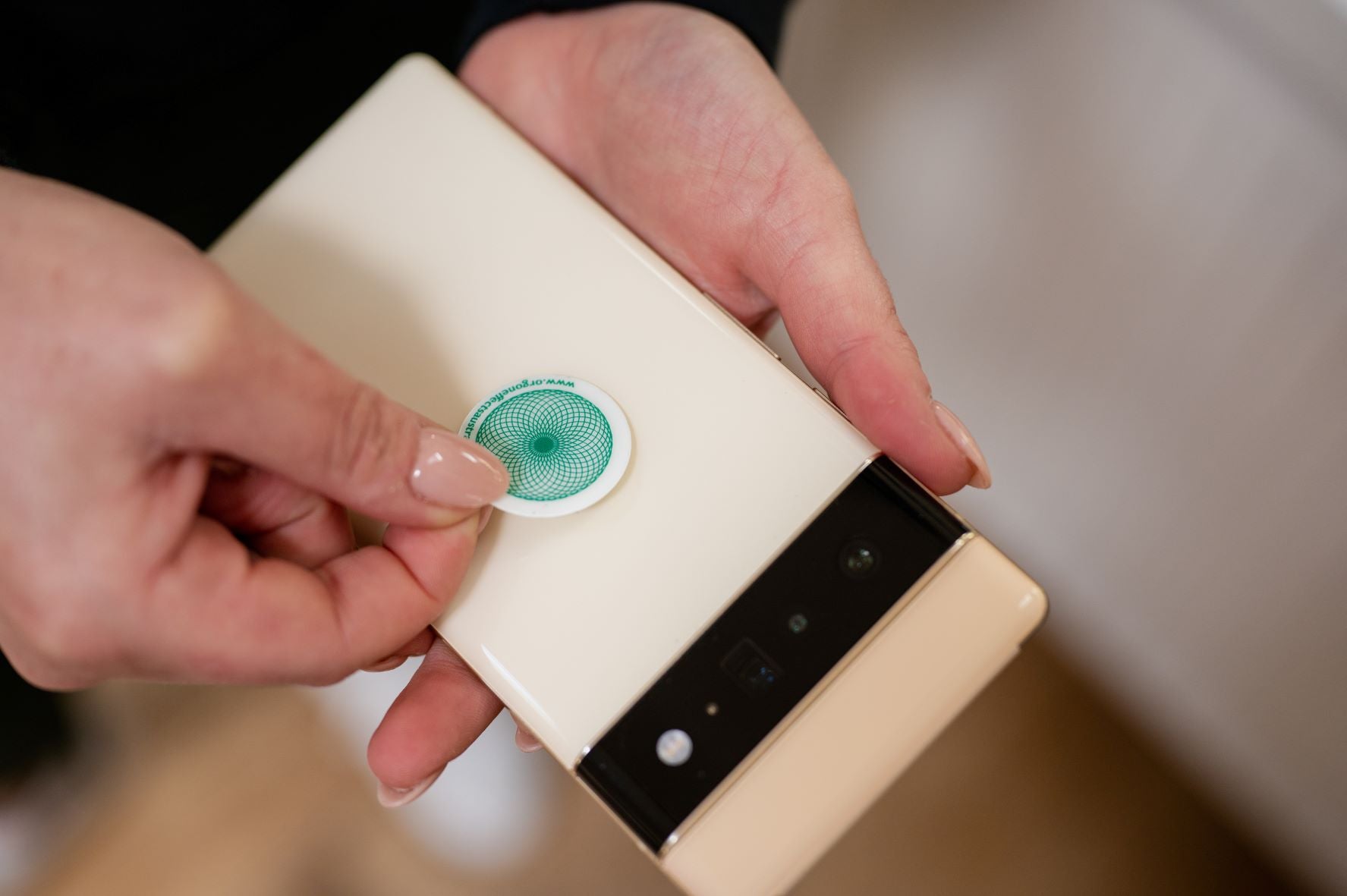In today's increasingly connected world, concerns about electromagnetic field (EMF) exposure have been on the rise. With the prevalence of wireless technology and devices, many individuals are questioning the potential health effects of prolonged EMF exposure. One area of particular interest is the link between EMF exposure and autism.
Autism, a complex developmental disorder, affects millions of individuals worldwide, and its causes are still not fully understood. While research in this field is ongoing, some studies suggest that there may be a correlation between EMF exposure and the development of autism.
Understanding the potential risks and taking proactive steps to minimize EMF exposure is crucial for the well-being of both children and adults alike.
In this article, we will explore the current research surrounding the link between EMF exposure and autism, and provide practical tips on how to reduce your exposure to EMF radiation.
Stay tuned to learn more about this important topic and empower yourself with the knowledge you need to make informed decisions about your health and well-being.
Understanding EMF (Electromagnetic Frequency) Radiation
Electromagnetic Frequency (EMF) radiation refers to the invisible energy emitted by electronic devices and wireless communication systems. It is classified into two categories: ionizing and non-ionizing radiation.
Ionizing radiation, such as X-rays and gamma rays, have enough energy to remove tightly bound electrons from atoms, which can cause damage to cells and DNA.
Non-ionizing radiation, on the other hand, does not have enough energy to ionize atoms but can still affect living organisms.
Non-ionizing radiation includes radio waves, microwaves, and extremely low-frequency electromagnetic fields. These are the types of radiation emitted by cell phones, Wi-Fi routers, power lines, and other electronic devices.
While non-ionizing radiation is generally considered to be less harmful than ionizing radiation, concerns have been raised about its potential long-term effects, particularly in relation to autism.
Research studies on EMF exposure and autism have yielded mixed results, with some calling for strong interim precautionary practices.
Some studies have found a correlation between high levels of prenatal EMF exposure and an increased risk of autism, while others have shown no significant association.
It is important to note that correlation does not necessarily imply causation, and more research is needed to establish a definitive link between EMF exposure and autism.
How does EMF Exposure Affect Brain Development?
One of the main concerns regarding EMF exposure and autism is its potential impact on brain development, especially during the prenatal and early childhood stages.
The developing brain is particularly vulnerable to external influences, and exposure to high levels of EMF radiation during this critical period may disrupt normal brain development.
Studies have shown that EMF radiation can penetrate the brain and affect the functioning of neurons. It has been suggested that EMF exposure may interfere with the production and release of neurotransmitters, disrupt calcium ion channels, and increase oxidative stress, all of which can have detrimental effects on brain function and development.
Furthermore, EMF exposure has been found to increase the permeability of the blood-brain barrier, a protective barrier that regulates the passage of substances from the bloodstream into the brain.
This increased permeability can allow harmful substances to enter the brain more easily, potentially leading to neurodevelopmental disorders such as autism.
Common Sources of EMF Radiation in Our Daily Lives
In our modern world, we are surrounded by sources of EMF radiation on a daily basis. Some of the most common sources include:
- Cell phones and wireless devices: Cell phones emit EMF radiation when in use, and even when not in use, they constantly communicate with cell towers, emitting low levels of radiation. Other wireless devices such as tablets, laptops, and smartwatches also emit EMF radiation.
- Wi-Fi routers: Wi-Fi routers emit EMF radiation to enable wireless internet connectivity. These devices are found in most homes and offices, and their proximity to people can result in significant EMF exposure.
- Power lines and electrical appliances: Power lines and electrical appliances, such as refrigerators, televisions, and microwaves, emit low-frequency EMF radiation. While the levels of radiation emitted by these sources are generally low, prolonged exposure can still contribute to overall EMF exposure.
- Smart meters: Smart meters are used to monitor energy consumption in homes and buildings. These devices communicate wirelessly with utility companies, emitting EMF radiation in the process.
- Baby monitors: Baby monitors, especially those using wireless technology, emit EMF radiation to transmit audio and video signals from the baby's room to the parent's device.
Reducing EMF exposure from these sources can be challenging, but there are steps you can take to minimize your exposure and protect yourself and your loved ones.
Tips to Reduce EMF Exposure for Individuals with Autism
While more research is needed to fully understand the link between EMF exposure and autism, taking proactive steps to reduce EMF exposure can be beneficial for individuals with autism and their overall well-being. Here are some practical tips to minimize EMF exposure:
- Limit cell phone and wireless device use: Use cell phones and wireless devices sparingly, especially in close proximity to the body. Opt for wired connections whenever possible, such as using headphones instead of holding the phone to your ear.
- Keep devices away from the body during sleep: Avoid placing cell phones, tablets, and other wireless devices near the bed while sleeping. Instead, keep them in a separate room or at a distance from the sleeping area.
- Turn off Wi-Fi at night: Consider turning off your Wi-Fi router at night or when not in use. This can help reduce overall EMF exposure, especially during periods of rest and sleep.
- Use wired internet connections: If possible, use wired internet connections instead of relying solely on Wi-Fi. This can help minimize EMF exposure from wireless routers.
- Create EMF-free zones: Designate certain areas of your home as EMF-free zones, such as bedrooms or areas where you or your loved ones spend a significant amount of time. This can be achieved by turning off or moving electronic devices away from these areas.
- Use EMF shielding products: Consider using EMF shielding products, such as shungite and orgonite pyramids and necklaces. We also offer whole home Orgone Energy products like our Geoclense and Domes.
- Opt for wired baby monitors: If you use a baby monitor, choose a wired option instead of a wireless one. This can minimize EMF exposure for both the baby and the parents.

EMF Shielding and Protective Measures

In addition to the tips mentioned above, there are other measures you can take to shield yourself from EMF radiation and protect your health:
- EMF shielding devices: There are various EMF shielding devices available such as shungite and orgonite pyramids and necklaces. We also offer whole home Orgone Energy products like our Geoclense and Domes. These products work by blocking or redirecting EMF radiation away from the body.
- Grounding: Grounding, also known as earthing, involves connecting yourself to the Earth's natural electric field. This can be achieved by walking barefoot on the ground or using grounding mats or sheets. Grounding is believed to help mitigate the effects of EMF radiation and restore balance to the body.
- Healthy lifestyle choices: Maintaining a healthy lifestyle can also help support your body's natural defenses against the potential effects of EMF radiation. Eating a balanced diet, exercising regularly, and getting adequate sleep can strengthen your overall well-being.
Other Factors Contributing to the Rise in Autism Rates
While the link between EMF exposure and autism is still being explored, it is important to acknowledge that there are other factors contributing to the rise in autism rates.
These factors include genetic predisposition, environmental toxins, prenatal complications, and maternal age, among others.
Genetic factors play a significant role in the development of autism, with certain gene mutations and variations being associated with an increased risk.
Environmental toxins, such as heavy metals, pesticides, and air pollutants, have also been implicated in the development of autism.
Prenatal complications, such as maternal infections or exposure to certain medications, can also increase the risk of autism.
Additionally, advanced maternal age has been linked to a higher likelihood of having a child with autism.
It is crucial to take a holistic approach when considering the factors contributing to the rise in autism rates, as they are likely multifactorial in nature.
Understanding the potential role of EMF exposure is just one piece of the puzzle.

The Importance of Further Research and Awareness
While the current research surrounding the link between EMF exposure and autism is still inconclusive, it is essential to continue conducting comprehensive studies to gain a better understanding of the potential risks and effects.
Further research can help identify specific mechanisms by which EMF exposure may influence brain development and contribute to the development of autism.
Additionally, raising awareness about the potential risks of EMF exposure and providing practical guidance on how to reduce exposure can empower individuals to make informed decisions about their health and well-being.
In conclusion, the link between EMF exposure and autism is a complex and evolving field of research.
While studies have suggested a potential correlation, more research is needed to establish a definitive link.
In the meantime, taking proactive steps to minimize EMF exposure, such as limiting cell phone use, turning off Wi-Fi at night, and creating EMF-free zones, can be beneficial for individuals with autism and their overall health.
By staying informed and implementing practical strategies, we can navigate the challenges of our increasingly connected world while prioritizing our well-being.





